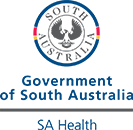The role of an orthodontist
Key facts
- Orthodontists are dental specialists who help straighten your teeth, bite and jaw.
- An orthodontist completes an extra 3 years of training after their dental degree.
- The most common orthodontic treatment is straightening or aligning teeth with braces or aligners.
- You do not need a referral to see an orthodontist.
What is an orthodontist?
An orthodontist is a dental specialist who prevents, diagnoses and treats dental and facial problems. Orthodontic treatments aim to improve the way the teeth and jaws function, as well as your smile or appearance. They can:
- straighten crooked or misaligned teeth
- fix a bad bite
- make sure your jaws are correctly aligned
- help with other issues like sleep apnoea
Orthodontists sometimes work as part of a team with dentists and oral and maxillofacial surgeons.
What is the difference between an orthodontist and a dentist?
A general dentist is like your family doctor (GP). They are highly skilled health professionals who can diagnose and treat conditions that affect your teeth, mouth and gums. They are experts in dental health for people of all ages.
An orthodontist completes an extra 3 years of specialist training after they have completed their dental degree. They have extra training in:
- biology
- biomechanics
- facial growth and development
- orthodontics practise
They are experts in all orthodontic treatment options and technologies for people of all ages.
When do I see an orthodontist?
Orthodontists treat children, teenagers and adults whose teeth are crooked or whose jaws are not correctly aligned. They often treat bite problems caused by the upper and lower teeth not 'fitting together' properly.
Signs that suggest you or your child may benefit from a visit to the orthodontist are:
- difficulty or pain with biting or chewing
- problems breathing through the mouth or snoring
- speech problems
- early loss of baby teeth due to cavities (decay) or trauma
- thumb sucking
An orthodontist can also improve the appearance of your teeth, for example if you have:
- gaps between your teeth
- crooked, uneven or crowded teeth
- an underbite or overbite — teeth that don't meet properly when you bite down or smile
- jaws and teeth that are out of proportion to the rest of your face
The most common orthodontic treatment is straightening or aligning teeth. This is usually done in teenagers.
Your orthodontist will attach braces or fit clear aligners to your teeth. You may also have other appliances fitted, such as expansion plates and bite-correcting springs.
You may prefer to have lingual braces, which are fitted to the inside of the teeth.
Orthodontic treatment to straighten the teeth can take 18 months or more. This is because your teeth need to gradually move into correct alignment.
CHECK YOUR SYMPTOMS — Use the Symptom Checker and find out if you need to seek medical help.
What should I expect during an appointment with my orthodontist?
Your first orthodontic consultation usually happens in 2 parts.
First, images of your teeth will be taken, such as through:
- x-rays
- photographs
- digital scans
- plaster moulds
Your orthodontist will examine these images to help in assessing your teeth and mouth conditions. They will take careful notice of your concerns and address any questions.
They will then discuss treatment options that they can offer based on your situation. Your orthodontist will explain all aspects of your treatment plan, including costs, and the expected outcome.
Your treatment will usually start at your next appointment. After your treatment begins, you may have a routine appointment every 4 to 12 weeks. You can read more about orthodontic treatments.
How much will it cost to see an orthodontist?
It can be expensive to have orthodontic treatment as the costs aren't covered by Medicare. Ask about the costs when you book an appointment.
If you plan to use private health insurance, contact your health fund to find out what costs they will cover.
If the costs are too high, you can consider seeing a different orthodontist. Some orthodontists may offer an interest-free payment plan.
What questions should I ask an orthodontist?
If you have any questions during your appointment, your orthodontist will be able to answer them. These questions might include:
- What treatment options can you offer me?
- What is the cost of treatment?
- How long will my treatment take?
- Will I need to make changes in my life while having this treatment?
- How often will I need check-up appointments?
ASK YOUR DOCTOR — Preparing for an appointment? Use the Question Builder for general tips on what to ask your GP or specialist.
How can I find an orthodontist?
You can ask your dentist, family members or friends to recommend an orthodontist. You can find an orthodontist on the Orthodontics Australia website.
You can also use the healthdirect service finder to locate an orthodontist near you.
You can visit the Australian Health Practitioner Regulation Agency website to check if an orthodontist is registered.
FIND A HEALTH SERVICE — The Service Finder can help you find doctors, pharmacies, hospitals and other health services.
Do I need a referral to see an orthodontist?
You do not need a referral from your dentist to visit an orthodontist. You can find and contact an orthodontist yourself without seeing a dentist or doctor first.
However, it can help to see your dentist before visiting an orthodontist. They can check that your teeth and gums are healthy.
You can see an orthodontist as a new patient, or to get a second opinion.
Resources and support
Visit the Orthodontics Australia website for information on treatment and costs.
You can call the healthdirect helpline on 1800 022 222 (known as NURSE-ON-CALL in Victoria). A registered nurse is available to speak with you 24 hours a day, 7 days a week.
Learn more here about the development and quality assurance of healthdirect content.
Last reviewed: November 2024















